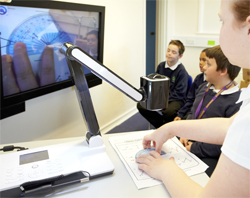Following the exceptional performance from British breakthrough star Emma Raducanu, who captured her first Grand Slam at the US Open recently, Emmamania is already inspiring pupils aged 4 - 11 to get more involved in tennis - and LTA Youth, the flagship
programme from The LTA, the governing body of tennis in Britain, has teachers across the country covered.
In conjunction with Lamar University, we present the ITEGS Report (International Test of Early Grade Skills). With a sample size over 290,000, it's the largest study of foundational reading and numeracy skills in the 5-9 age bracket across multiple countries. ITEGS offers a unique comparative snapshot across countries (and states/regions) during the very critical foundational skill acquisition period. It helps identify educational jurisdictions that are having greatest success with their students.
It has been quite a time since I started to use CSI (Crime Scene Investigation) as a hook to engage students into a range of key (and often for them, boring) subjects. For me it was Science and ICT (Information Communication Technology), but it can be used to develop literacy and numeracy skills, as well as those soft skills such as collaboration and problem solving that can be difficult to plan into busy timetables.
Secondary and primary teachers across Wales have been faced with the challenge of embedding the Literacy and Numeracy Framework (LNF) into their whole school curriculums. Ambitious in scope, the LNF is a planning and assessment tool that maps key literacy and numeracy statements from the start of KS2 through to the end of KS3. Pupils will be assessed against the framework, as well as sitting annual national reading, numerical reasoning and numerical procedural tests every May.

Continuing on from the previous articles about the benefits of using visualisers in the classroom, it's now possible to take a closer look at how to maximise the use of visualisers across specific curriculum areas.
To start off this series, we will focus on numeracy and how visualisers can uniquely be used to enhance teaching and learning from key stages one to four.
Below is a list of the foundational uses of a visualiser to aid numeracy learning at key stages one and two:

A community-driven platform for showcasing the latest innovations and voices in schools
Pioneer House
North Road
Ellesmere Port
CH65 1AD
United Kingdom